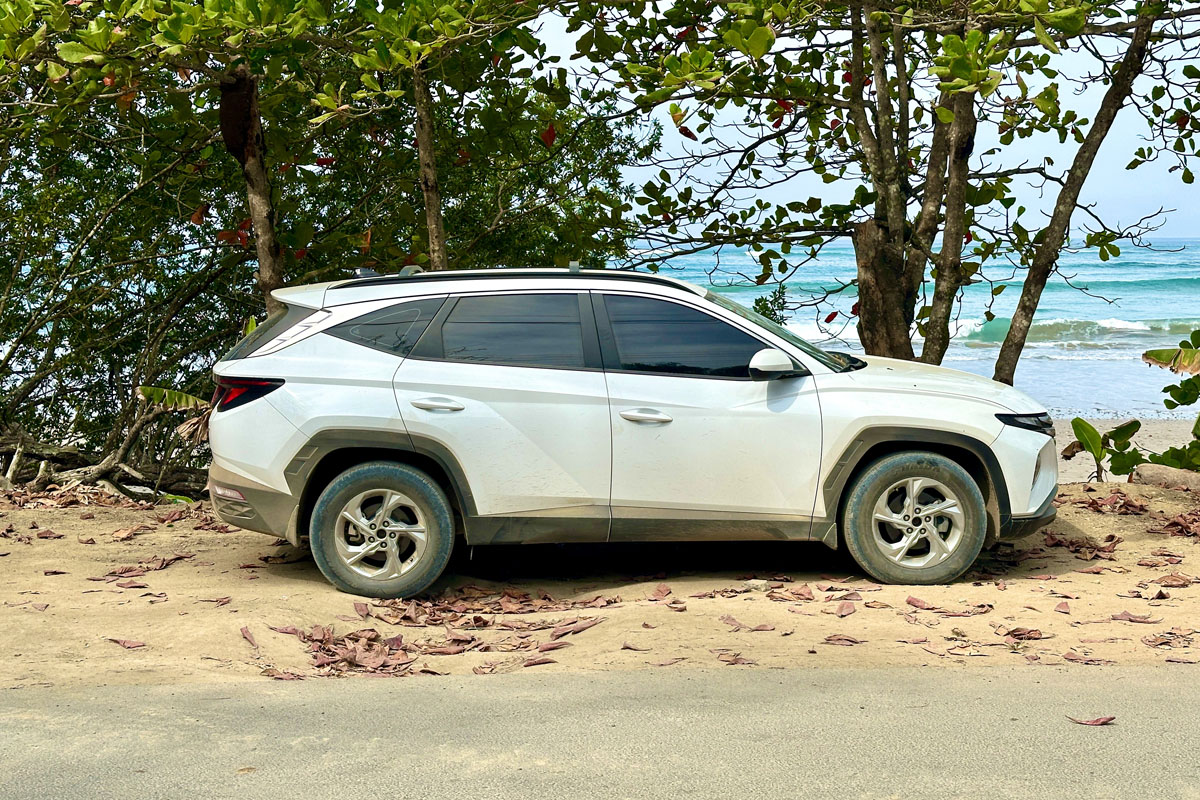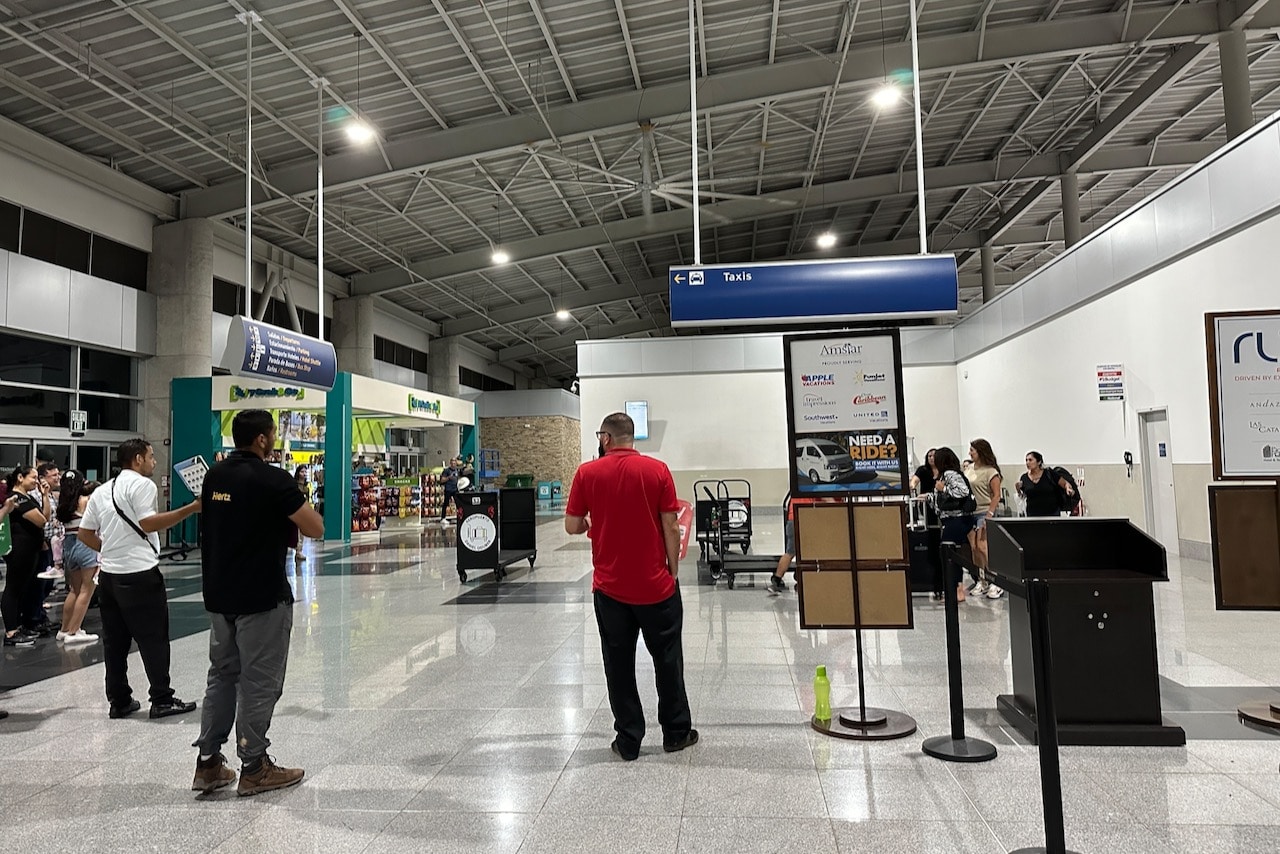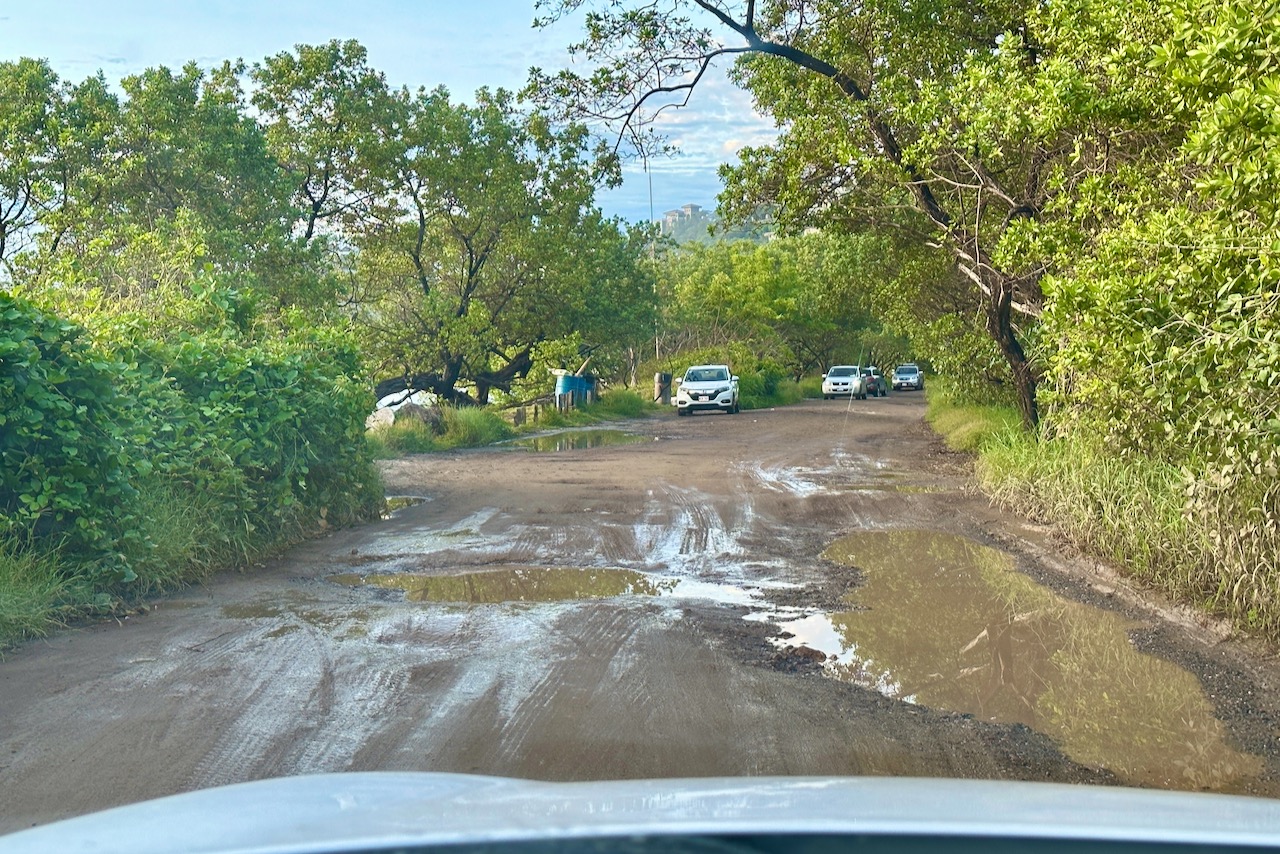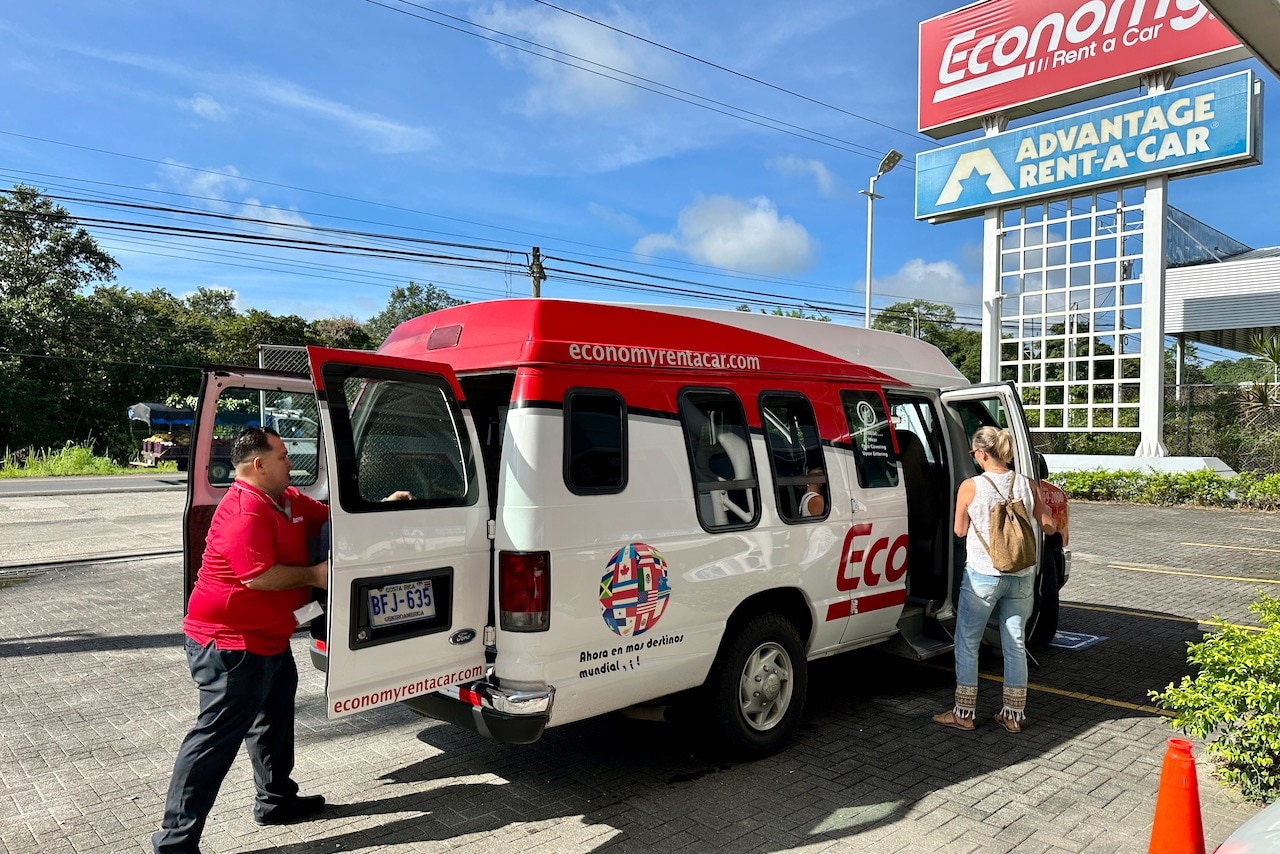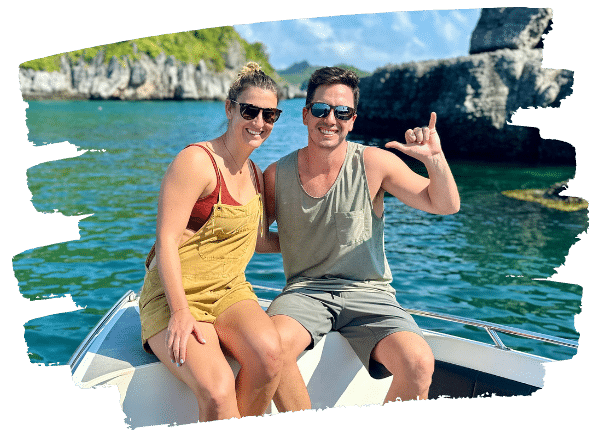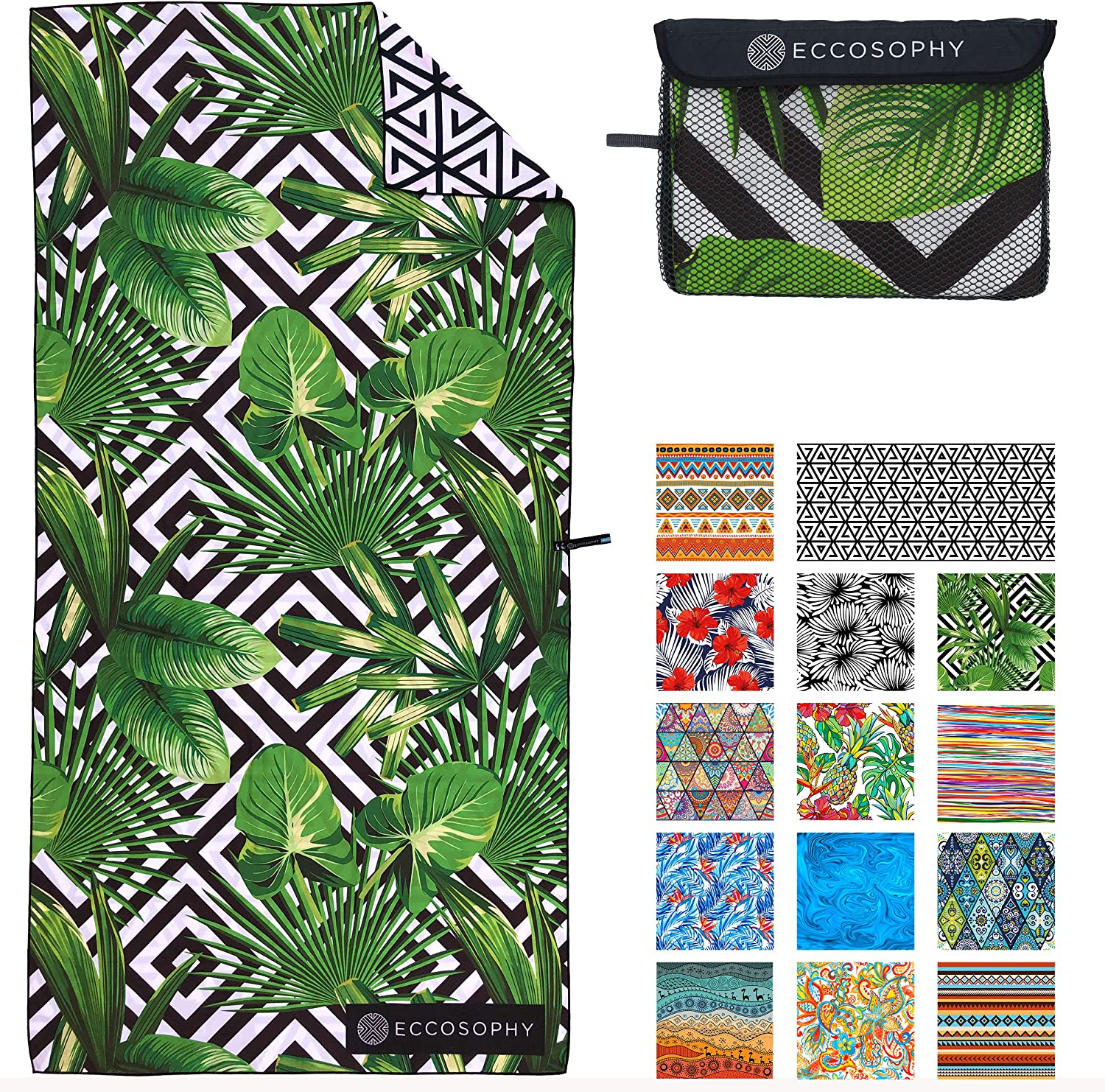Hola 👋
Renting a car in Costa Rica is the absolute best way to get around the country. It gives you the freedom to explore at your own pace and avoid wasting time and money on expensive taxis, which can be difficult to find in certain areas. This post will highlight some of the cost considerations, insurance requirements, and other helpful tips. Let’s take a look at our guide to renting a car in Costa Rica.
Reservations
Make a reservation for your rental car and don’t wing it when you get there. This locks in a price that you’re comfortable with and makes the whole process much easier when you get to the rental counter. It also helps if you’re arriving on a late flight, so they are prepared to shuttle you to the off-site office locations.
When we were first getting our system down, we usually used Expedia or Economy Bookings to search and quickly compare prices for our cars. They’re easy to use and good tools to compare car options side-by-side. Also, many credit card companies contract with Expedia to make car bookings. Chase is one of them, so it’s easy to switch to the Chase Ultimate Rewards booking portal and complete the reservation. If you don’t have any Chase credit cards, we recommend the Sapphire Reserve for the best travel perks.
Who We Use
After renting with a few different companies, Economy Rent A Car became our go-to for a while. We haven’t had the nightmare experiences that others have reported and still rent from them on occasion. Unfortunately, we’re getting consistently negative feedback. We don’t recommend them anymore unless you use our contact, who provides a more personalized service. It’s a bummer but now Adobe is our go-to. Our contact at Economy still occasionally sets up rentals for us, and guests at our condo in Playa Flamingo. Shoot us a message on Instagram or Facebook if you’d like his info.
So, Adobe Rent A Car is now our recommended provider. Their fleet of cars is refreshed every two years, keeping them in good condition. Plus, they have 13 offices in most of the major towns in case you need help with the vehicle. We really like how they display their additional insurance options at checkout, so it’s pretty hard to be surprised when you get there.
The rental car industry in Costa Rica is well known for aggressively pushing supplemental insurance coverage. Most of the negative reviews about all of the companies complain about the surprise charges at the rental counter. That’s why it’s good to really familiarize yourself with insurance requirements before you get there and book with a company that offers transparent pricing like Adobe.
Good To Know
Booking a rental without proper planning may be disastrous if you aren’t prepared for the mandatory insurances. That’s why we recommend Adobe Rent A Car for their pricing transparency.
Discounts
We’ve negotiated a discount off their publicly available rate when you book using this link. The discount is around 5-15% and varies throughout the year, but it’s always cheaper than the general advertised price. There’s also a form below to check availability on Adobe Rent A Car.
Cost considerations
Renting a car in Costa Rica can be a confusing and painful process if you aren’t prepared. Seasonality, vehicle type, insurance considerations, and even the rental company are some factors in a rental car’s cost. Below are some of the biggest variables.
Seasonality
From our experience, seasonality is one of the biggest variables. The same rental car may cost $500 for a week in July, and $1000 for a week in January. Rental rates are much lower in the green season, which is actually our favorite time to visit Costa Rica. If you can handle the potential for some weather, May and September are some of our favorite months to visit. Transportation and accommodation prices can be half of what they are from December to February.
Type of vehicle
Vehicle options range from ultra-compact to full-size SUVs. We recommend looking into the Hyundai Tuscon for a couple or a small family traveling light. It has a great balance of daily cost, fuel efficiency, and dirt road ability with standard all-wheel drive. 2-wheel drive vehicles are an option but we really recommend all-wheel drive.
Our favorite Hyundai Tuscon 🤙
Insurance and other fees
You cannot rent a car in Costa Rica without insurance. So… this can be a tricky one. If it’s your first time renting a car in Costa Rica, we recommend getting whatever insurance you are comfortable with. The problem? Costa Rican insurance requirements are really confusing, and many companies use that to their advantage.
Required Liability Waiver
First, there is government-required liability insurance that you cannot decline. For average vehicles, it’s about $15-$30/day on top of the base rental rate. In the event of an accident, this insurance only covers damages to OTHER people and their property. It does not protect you or your vehicle. It’s required and not often included in the advertised daily rate. The various companies have different names for this. Some of the most common are Liability Waiver (L.W.) or Liability Protection Insurance (L.P.I).
Collision damage waiver
Second, the collision damage waiver is insurance required(ish) by most companies, designed to protect your vehicle with a high deductible of between $1500-$3500. This coverage does NOT normally protect you from theft, negligence, or any damage other than a road accident. Depending on the vehicle, this protection ranges from around $20-$50/day on top of the base rental rate. I wrote it’s required(ish) because many companies will allow you to decline this if your credit card provides PRIMARY international rental coverage. If they allow you to waive this, they will still place a substantial hold on your credit card to protect their vehicle. More on that below. Common names for this are Collison Damage Waiver (C.D.W.) or Loss Damage Waiver (L.D.W.).
Full coverage zero liability
This optional coverage is pretty straightforward, and it normally protects you from almost everything. Road accidents, theft, vandalism, etc., typically with a low or no deductible. Remember, this does NOT cover you for accidents from negligence like crossing a river you shouldn’t be. Zero-liability coverage normally costs another $20-$50 on top of any other insurance. See how this can add up quickly? Common names for this are Limited Loss Waiver (L.L.W.), or Supplemental Protection Plan (S.P.P.).
Using credit card insurance
We usually decline all of the optional insurance because our Chase Sapphire Reserve and Capital One Venture X credit cards provide primary international rental coverage as a perk of the card. We have yet to need this primary coverage, but you never know where your adventure will take you. If you plan on using a travel card to decline this insurance, make sure to have a printout from your credit card company that includes the last 4 digits of the card number. They know what cards provide this benefit but they still may not let you decline coverage without a physical letter from your credit card company. Don’t miss our post on the benefits of a good travel credit card.
Leaving customs in the Liberia Airport
Picking up the car
In Liberia
The rental car pickups are outside of the airport so your rental company will shuttle you to the off-site location if you haven’t pre-arranged the car to be delivered. After you land and get through customs, head over to the rental car counters near the exit of the airport. There’s usually one person at each company kiosk. Confirm your reservation with them and they will arrange a shuttle to take you to the pickup location. If you get in late and there’s no one at the counter, continue exiting and there should be someone with your rental company’s sign waiting for you.
In San Jose
The process at the San Jose Airport is the same as in Liberia. You’ll find the agent for your rental company and take a shuttle to the rental car area, which is located outside of the airport. Many of the rental companies are located about 10-15 minutes out of the airport zone. Normally they get you there fairly quickly and you’ll be off soon.
Should you rent a 4×4?
The main highways are paved but dirt roads are a norm in much of Costa Rica. Like insurance, this one comes down to your comfort level getting around on dirt roads in a new area. Most midsized vehicles like the Hyundai Tucson come with all-wheel drive standard which is all you should need. We’ve made the mistake of not having a 4×4 in the Green Season, so our general advice is to get it to be safe. Restaurants like Ronny’s Place in Manuel Antonio are almost impossible to get to in a 2WD rental.
Washed out roads in the Green Season
Driving
Unlike downtown San Jose during rush hour, driving on the highways in most of the country is very straightforward. The biggest mistake you can make is driving too aggressively. You’ll see many locals, ex-pats, and tourists speed way over the posted limits. You can get a speeding ticket and some roads are just plain dangerous with vehicles passing slow freight trucks.
It’s okay to pass slow traffic when you can do so safely, but be careful because other drivers on the road don’t always use good judgment when passing. We’ve seen motorcycle accidents first hand, and it’s a sobering reminder to use caution and drive smart.
Bring a battery pack for your cell phone if you plan to use it for navigation or music. Not all rental cars have a USB port, and night driving is much easier when your phone is charged. We recommend the Anker magnetic charger if you have a phone that accepts wireless charging. You won’t need to mess around with a cable and it doubles the battery of your phone. Enjoy a free 30-day trial to Audible if you enjoy podcasts or audiobooks.
Getting gasoline is very easy in Costa Rica. The stations are full service, so pull to a pump, and an attendant will ask if you want a dollar amount or a full fill. Pay with cash or a credit card and you’re on your way. Most gas stations have a one-way entrance so be sure to go with the flow of traffic to avoid an embarrassing rerouting from the attendant. Plan ahead if you’re distance driving because stations are not always around when you need them.
Dropping off the rental car
Nothing special here. Pull into the rental drop-off area where you picked up the car and flag down someone to check you in. The shuttle will get you back to the airport on the next round and your post-trip blues will probably start to sink in. We use this time as inspiration to plan the next trip! Maybe a trip to the Caribbean Coast?
The Airport Shuttle – Thanks Stanley 🤙
Costa Rica Driving Tips
Check the wipers
Check the windshield wipers before you leave the rental pickup area. If there is anything wrong, ask for another car. It rains often and not having working wipers can be flat out dangerous.
Keep your phone charged
Don’t forget a phone charger or battery pack because GPS apps will drain your battery quickly. We always use this Anker Wireless Charger in case the rental doesn’t have a USB port. It’s not an issue if you’ve rented with Economy.
Check for damages
Check for damages to the vehicle before you leave the rental pickup area. Most rental cars will already have some scuffs and dings so make sure they are noted on the inspection form that you will have to initial.
Do a video walkaround
We always do a quick video walkaround in case there are any damage disputes after you drop off the vehicle. It takes less than a minute and could save you time and money later if there are any issues.
Navigation apps
We’ve been told by many rental car employees that Waze is the best navigation app for driving in Costa Rica. We’ve had good experience with Waze but Google Maps has always worked well too. Apple Maps doesn’t navigate in Costa Rica so be prepared with a different app if that’s your usual go-to.
Research your route
We made the mistake of following Google Maps blindly, which tried to save us 5 minutes of drive time and took us down Highway 911 to the coast from Liberia. It was 9pm at night in the rainy season and we had a 2WD rental car with horrible windshield wipers. The pavement quickly turned into a dirt road full of potholes, a river crossing, and narrow passing areas. All of this could have been avoided if we just looked at the alternate route options before heading out. Needless to say it was all part of the adventure and we made it to Playa Flamingo in one piece.
Don’t Want To Drive?
For those who really don’t want to drive themselves, we recommend the shuttle company ILT Costa Rica. We’ve used them multiple times when traveling with bigger groups, and their English-speaking drivers were professional and friendly.
Public buses are also available throughout the country, but only advisable if you’re spending a significant time there.
Don’t Forget
You can buy most things throughout the country, but the prices of some items may surprise you. Sunscreen can cost upwards of $20 USD for a normal size tube at a small local market. Some of our don’t forget items are listed below.
Sunscreen – Reapply all day when you’re outside. The sun is no joke here!
Bug Spray – Mosquitos and other bugs are around all day, especially in the shady areas near still water.
Quick-dry towel – These quick-dry towels are also sand free.
Waterproof hat – I like this floating hat, but any good hat works.
Polarized sunglasses – They don’t have to break the bank. Check out these polarized sunglasses by Blenders.
Waterproof phone case – Great if you’re planning on water activities.
Let’s go!
Renting a car in Costa Rica is our favorite method of transportation. Enjoy the freedom to explore on your own terms. Questions? Don’t miss the Adobe Renta A Car Discount and drop us a comment below!

